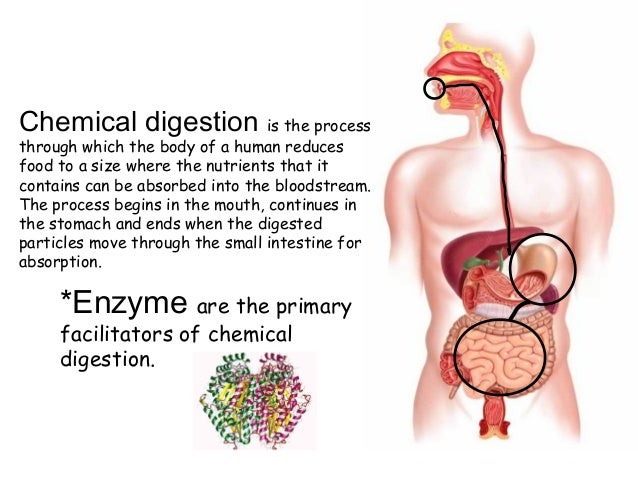Specialized cells help absorbed materials cross the intestinal lining into the bloodstream. Food is broken down into smaller pieces by chewing.
 Process Of Digestion Digestion Process In Mouth Stomach Intestines
Process Of Digestion Digestion Process In Mouth Stomach Intestines
Several muscular valves control the passage of food and prevent it from moving backwards.

What happens to food during digestion. The small intestine absorbs most digested food molecules as well as water and minerals and passes them on to other parts of the body for storage or further chemical change. What happens to the digested food. The smell or even the thought of food starts the production of saliva by the salivary glands.
The teeth cut and crush the food while its mixed with saliva. This process helps to make it soft and easier to swallow. The saliva in your mouth contains amylase which is another starch.
The small intestine absorbs most of the nutrients in your food and your circulatory system passes them on to other parts of your body to store or use. Carbohydrates are digested in the mouth stomach and small intestine. Digestion is the mechanical and chemical break down of food into small organic fragments.
In chemical digestion enzymes break down food into the small molecules the body can use. Regarding this what happens to food after digestion. The small intestine is where most of the digestion and absorption of our food takes place.
What happens to the digested food molecules. The digestion process also involves creating. Carbohydrase enzymes break down starch into sugars.
Digestion is the complex process of turning the food you eat into nutrients which the body uses for energy growth and cell repair needed to survive. It then pushes the small particles of food into the first part of the small intestine called the duodenum. All the food you eat goes through your digestive system so it can be broken down and used by the body.
Special cells help absorbed nutrients cross the intestinal lining into your bloodstream. It is important to break down macromolecules into smaller fragments that are of suitable size for absorption across cell membranes. The small intestine absorbs most digested food molecules as well as water and minerals and passes them on to other parts of the body for storage or further chemical change.
Digestion in the Oral Cavity When food is taken in through the mouth chewing and mixing of the food occurs. Specialized cells help absorbed materials cross the intestinal lining into the bloodstream. There the food is chewed and mixed with saliva which contains enzymes that begin breaking down the carbohydrates in the food plus some lipid digestion via lingual lipase.
There is also a chemical breakdown of carbohydrates due to the action of saliva from the salivary glands. Digesting food is a two-part process thats half mechanical half chemical. After it makes its way down the esophagus the food reaches the lower esophageal sphincter which is a muscle that relaxes to allow the food to pass into the stomach.
Once the food is inside the mouth it is moistened by saliva and the teeth and tongue begin the. Carbohydrates take a journey starting with the intake at the mouth and ending with elimination. The movement of food through the main digestive tubes esophagus small intestine and large intestine is maintained by a series of muscular contractions called peristalsis.
Digestion is the breakdown of large insoluble food molecules into small water-soluble food molecules so that they can be absorbed into the watery blood plasmaIn certain organisms these smaller substances are absorbed through the small intestine into the blood streamDigestion is a form of catabolism that is often divided into two processes based on how food is broken down. Once filled with food the stomach grinds and churns the food to break it down into small particles. Digestion is the process of changing food into a form that the body can absorb and use as energy or as the raw materials to repair and build new tissue.
30 of the starch is hydrolyzed by the action of amylase which is a salivary enzyme. The stomach muscles then mix. Click to see full answer.
What happens to the digested food molecules. Chewing increases the surface area of the food and allows an appropriately sized bolus to be produced.